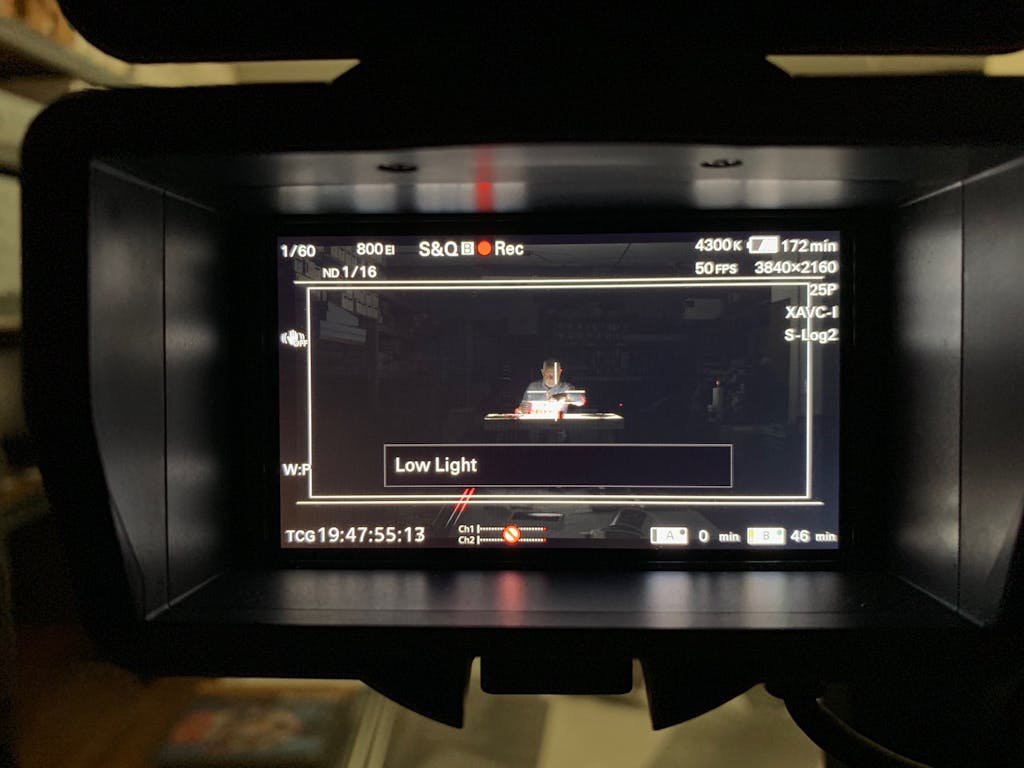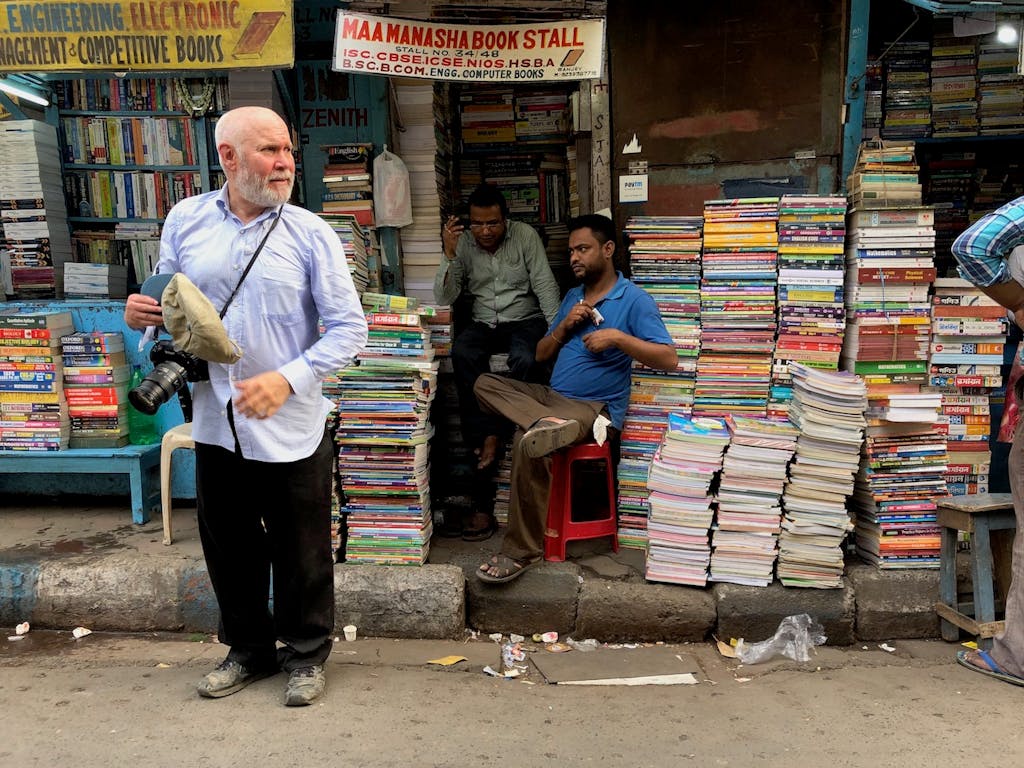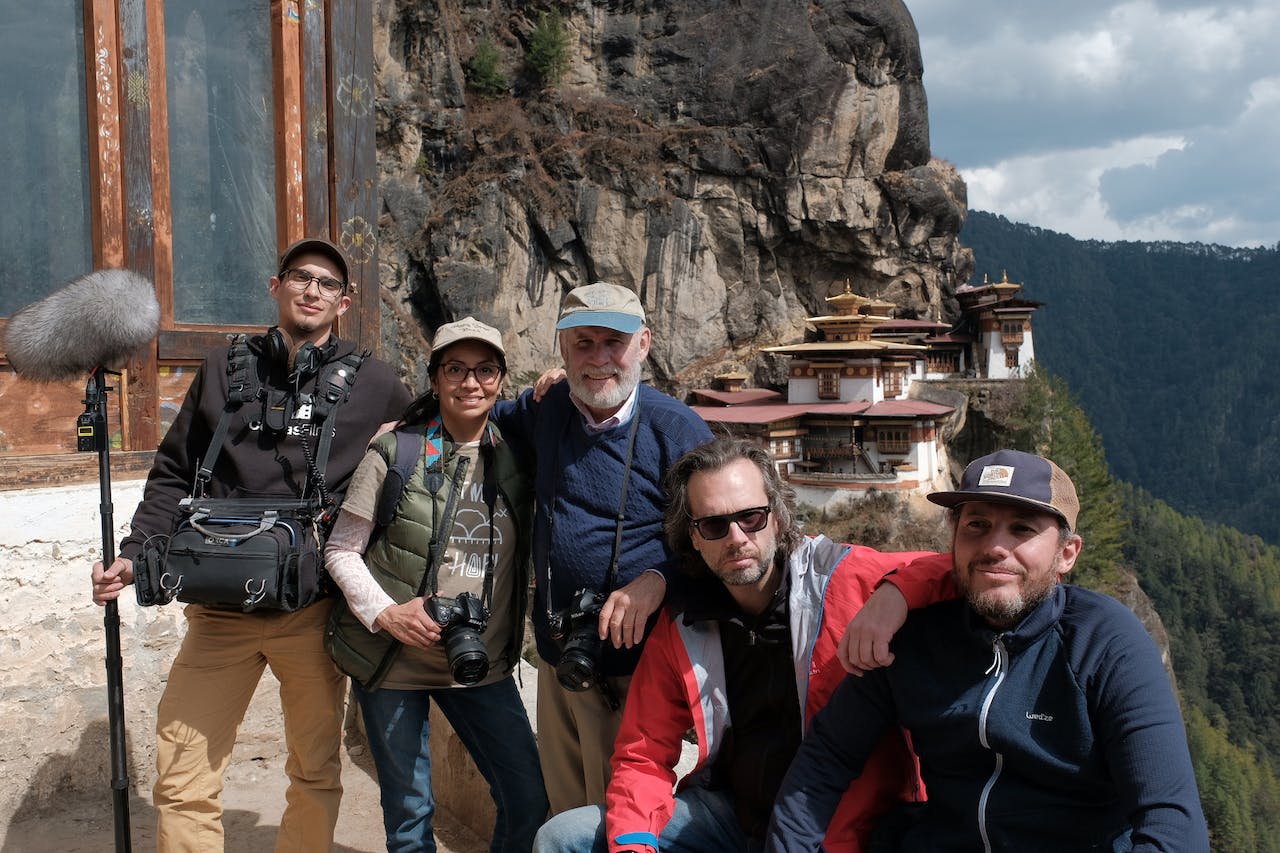Pursuing the Human Story: Director Denis Delestrac on Filming Steve McCurry
Delestrac’s documentary McCurry – The Pursuit of Colour, is now available on Amazon Prime Video (U.S. and U.K.) and Apple TV (U.S.).
Nearly 20 years ago, budding documentary filmmaker Denis Delestrac was creating his first-ever episode of a documentary series. Nomads, which aired originally in 2003, focused on chronicles of modern-day nomads, and Delestrac thought photographer Steve McCurry might just be a great example of a restless spirit who turned wanderings into an art form. Delestrac, who had spent nearly a decade working as a photojournalist in the United States and his native France, set out to make a call to McCurry, already a legend in photography. And he thoroughly expected to be forced to vet his pitch to gatekeepers like secretaries, assistants and personal aides before he could invite McCurry to be his profile subject.
What he didn’t expect was that McCurry would pick up his own phone. After temporarily freezing, Delestrac thawed, and they quickly discussed the documentary’s theme. “Grab a piece of paper,” McCurry said, and Delestrac quickly scribbled notes about a rendezvous in Rajasthan, where the two creatives would spend a month traveling across northern India and Nepal.
Today, almost two decades after that fateful phone call, Delestrac is an award-winning director and producer with dozens of projects under his belt, including IMAX blockbuster Mystery of the Nile (2005), Pax Americana and the Weaponization of Space (2009) and Sand Wars (2013). And McCurry is, well, the even more legendary, International Photography Hall of Fame-honored photographer Steve McCurry.
And, more importantly, they have become close friends and travel companions. Thanks to McCurry’s exclusive partnership with Silversea Cruises, Delestrac has accompanied and documented the legendary photographer’s visits to some of the world’s most exciting destinations, from the lush Virunga Mountains of East Africa to the wind-swept steppes of Mongolia and the remote shores of Easter Island. If the 23-minute-long segment, “The Face of the Human Condition,” marked the beginning of their fruitful collaboration, the time has come to take the story to the next level, this time with a full-length documentary. McCurry – The Pursuit of Colour, which launched in June 2022, transports viewers to the world in which McCurry travels, observes, absorbs and, of course, photography from their journeys to Madagascar, Papua New Guinea, and Bhutan, among others.
In this exclusive interview, we chat with Delestrac to learn more about the full-length documentary in the works, along with sharing both their experiences and outlooks on travel.

What inspired you to make a full-length documentary about Steve McCurry?
Steve and I have always talked about making a feature-length documentary for a global theatrical release. Fifteen years had passed between the first time we met and the day we pressed the button to start shooting this film. And during all this time, he went from being a very important photographer to becoming a legend. So, although I had no idea what kind of film I could make nor did I have a story written, one morning I messaged Steve and told him: ‘I’m ready.’ We met one week later in Burma and started shooting, and we’ve been shooting for 5 years after that.
This is where the exclusive partnership with Silversea has really shone for me because I didn’t want to go the usual broadcasters’ way. I didn’t want to have too many people around the table giving their opinion. The broadcasters’ money has a price and I didn’t want to pay that price. I wanted to make the film that I felt was proper and that would be at the level of quality and storytelling that would be faithful to what Steve has done in his life. And Silversea provided this freedom. It’s Silversea’s film as much as it’s mine or Steve’s.
Do you see parallels between your life-story and that of Steve’s?
I don’t think anybody can really compare with Steve McCurry. I’m not starstruck at all because we are good friends, but what this man has seen — wars, all the facets of the human condition, what makes us fundamentally human — he has seen all that, from the darkest to the brightest and I think that’s pretty extraordinary. There’s not many people left like that, and the amazing luck that we all have is that he’s been shooting pictures all this time, so we have this record, what he calls the family album of our species. In 9/11 he was there, when the Berlin Wall fell he was right there, so many wars and revolutions and moments of joy. He’s seen and lived and gone through so many ups and downs and strong emotions.
We do have a few things in common, of course. We like traveling and meeting people. And we love telling stories through images. If I had to pick one thing, I’d say it’s the empathy and the respect for your subjects and for wanting to tell stories that are able to shake you or touch your heart.
“That’s the difference between a tourist and a traveler. A traveler is someone who is part of the story, who is not just an observer sitting in public to look at the place. A traveler is part of the big play that is our world.”
Denis Delestrac

How is it to work side by side with Steve?
The first thing you learn when you meet Steve is that he’s the most serious, punctual, perfectionist person. And he takes his job very seriously; he works more than anybody else and his physical condition is amazing. This man keeps running and he keeps you on your toes. His battery is endless. After a long day of shooting, 10-15 hours, he’s still going, and you’re dead tired and just want to go to your hotel and take a shower. He’s hungry in a way that is really, really unique. He always says life is short and that’s kind of his mantra. He wants to make the most out of his life, and leave something for all the public to enjoy and to learn from.
What have been some of the challenges you’ve faced?
When you make a film about a photographer, it’s tricky because you don’t want to interfere. He’s shooting his pictures and I’m shooting him shooting pictures, so we had to find the right balance to not bother each other. Especially for me to not bother him while he’s doing his job, because you don’t shoot pictures superficially; you have to really get immersed in your subjects and feel the place and enter in this kind of meditative state where you see how the images happen. You can’t be shooting and thinking at the same time about what you’re going to have for lunch. And when Steve is shooting, he’s very much in his bubble so we don’t want to disturb him. But at the same time, sometimes you have to direct. It took us a bit of time to find that balance, but we found it based on respect and hard work.

You also want to avoid using the photographer’s narrative code, because his pictures are a certain way due to the framing and the light. So you don’t want to try to apply the codes of his photography to the live action film, because first of all you can’t compete, and the live footage is meant to tell the story in a way, so in terms of color and light, the framing is different. I apply my own personality and pace, and Steve has his own very clear identity. The result is a marriage of different sensibilities to create a unique film.
Visually, what do you feel drives Steve?
I think he’s more interested in the human story, but he’s doing landscapes and wildlife and everything. He’s interested in our planet, the life in this planet, and that includes how people eat, sleep, or read the newspaper on a park bench or how babies cry or how kids are playing football in the street in Sicily. Everything is interesting; any simple action we take for granted that we do every day. Steve is ultimately interested in the simplicity that make us such a complex and captivating species. And because we find ourselves in a world that is undergoing a homogenization process through globalization, I think Steve is on a race to capture the last drops of authenticity and tradition.
Is the partnership with Silversea a crucial element in this mission?
Absolutely, I think that Steve and Silversea have the same DNA to explore and to go further. The definition of tourism in the hands of Silversea takes a whole new dimension. We wouldn’t have been able to visit Bhutan, or Papua New Guinea or Easter Island, these really remote places where not a lot of people go. And it’s really interesting to go to see the places where you can see tribes whose people’s lifestyles were established centuries ago, maybe millennia ago. I think it’s important to not forget who we are and I think that’s where Steve’s work and what Silversea is doing is crucial. In order to learn about humanity it’s very important to see how your neighbor lives. That’s the only way you can respect and understand, whether you live in Kolkata or Mongolia, we are all exactly the same. We all want health and education and love and friends and family. And the more you travel, the more you understand that having much more doesn’t actually mean anything. I think true wealth comes with experience and that’s what travel, Steve and Silversea really can provide.

Of all the destinations you’ve visited with Steve, have there been any that have stood out for you or impacted you in a special way as a traveler and a filmmaker?
No. It’s like when people ask you what’s your favorite movie. I can’t possibly answer that. They are all different and we love them for different reasons. We all love each country or each place for one experience. And to me, the most important thing when I travel is not the set; it’s the actors. The people are what give you all these emotions. You never come back from a trip the same way you left. You will always learn something, you will have a new friend, you will have tasted something new… and I think that’s the real value of travel It’s the only way for me to learn what this whole thing is about, the only way to understand what we are doing on this Earth. And being there and seeing for yourself is a really good way to grow and stay connected to the world.
Tourism is important as long as you don’t stay too much on the surface and you empathize with the place and the people. For me, that’s the difference between a tourist and a traveler; a traveler is someone who is part of the story, who is not just an observer sitting in the public to look at the place, a traveler is part of the big play that is our world.
How has Steve McCurry helped you grow as a filmmaker?
Steve is a true legend, but we live in this fast-paced society where lots of people think it’s easy to get recognition. You want to be a rock star? Just go to one of these reality TV shows and you’ll make it to stardom. I think this is a rather upsetting illusion. Steve made it the real way. He’s worked, taking the good and the bad, never being satisfied. And I think that’s something you learn with him: to never be lazy, to never accept normality or mediocrity and always try to reach excellence and make every minute of your life count. I think I’ve been really lucky to have this close relationship and to have been able to travel all seven continents with Steve. Each day is a masterclass on how to live a very fulfilling life, and that’s priceless.
Want to follow in Steve McCurry’s footsteps? Find a cruise that explores Easter Island, Greenland, Madagascar and more.
